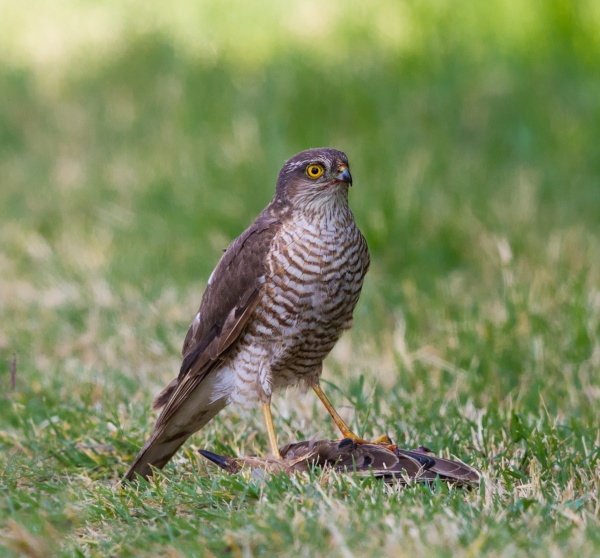Facts About Eurasian sparrowhawk
The Eurasian sparrowhawk is a captivating small bird of prey belonging to the Accipitridae family. Adult males are particularly striking with their bluish-grey upperparts and orange-barred underparts, while females and juveniles exhibit brown plumage with brown barring. Notably, females are significantly larger than males. These birds primarily hunt woodland species but are adaptable enough to thrive in various environments, including urban areas where they may capture garden birds.
Regarding breeding, Eurasian sparrowhawks favor suitable woodlands. They construct nests from twigs and lay pale blue eggs speckled with brown spots. However, life is challenging for the young, with only about 34% surviving to adulthood. Adult birds have a better survival rate, with a 69% annual survival chance, and typically live around four years.
The species faced significant challenges after World War II due to the use of organochlorine insecticides, which resulted in thinner eggshells and higher mortality rates. Fortunately, their numbers have rebounded since these chemicals were banned.
There has been some conflict between Eurasian sparrowhawks and humans, particularly with racing pigeon enthusiasts and concerns about declining passerine bird populations. However, studies have shown that their impact on songbird numbers is not as severe as previously thought. Interestingly, these birds have also been part of falconry for centuries, known for their challenging training but impressive hunting abilities.
The Eurasian sparrowhawk has also made its way into mythology and literature, underscoring its significant role in culture. Its hunting habits, habitat preferences, breeding behaviors, and interactions with humans have been extensively studied, providing valuable insights into its ecological importance and the need for its conservation.

 Austria
Austria